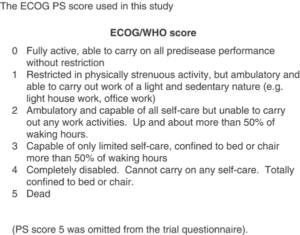Pink Eye and Contact Lenses_ What to Know
Understanding Pink Eye and Its Impact on Contact Lens Wearers
Waking up to a slightly red, swollen eye with some discharge often signals pink eye, medically known as conjunctivitis. This condition involves inflammation of the conjunctiva, the transparent membrane covering the white part of the eye (sclera). When the conjunctiva’s blood vessels become irritated, they swell, giving the eye a reddish appearance. Pink eye can stem from viral or bacterial infections, allergies, or irritants like pool chlorine, makeup, or air pollution. If you wear contact lenses, you may wonder whether it’s safe to continue using them. This guide explores how to manage contact lens use during pink eye, effective treatment options, and when to seek medical advice.
Should You Wear Contact Lenses with Pink Eye?
Why You Should Avoid Contacts
It’s best to refrain from wearing contact lenses until your pink eye fully resolves. Touching your eyes, especially with a viral or bacterial infection, can worsen the condition and spread the infection to others or the other eye. Contact lenses can further irritate an already inflamed eye, delaying healing. Additionally, wearing eye makeup during this time is not recommended, as it can exacerbate irritation and spread infection.
Risks of Wearing Contacts
Inserting contact lenses during pink eye can aggravate symptoms and potentially introduce more bacteria or viruses to the eye. For contagious forms of pink eye, lenses and their cases may harbor pathogens, increasing the risk of reinfection. To prevent complications, pause contact lens use until the condition clears.
Effective Treatments for Pink Eye
Home Remedies for Relief
Pink eye often resolves on its own, but certain home remedies can ease discomfort:
-
Compresses: Apply a warm or cold compress to closed eyelids a few times daily. Warm compresses help clear mucus or debris, while cold compresses reduce swelling and itching, especially for allergic pink eye. Use a clean washcloth each time to avoid spreading infection.
-
Artificial Tears: Over-the-counter artificial tears can alleviate dryness and soothe irritation.
-
Allergy Medications: For allergy-related pink eye, anti-allergy eye drops or oral antihistamines may reduce symptoms.
Medical Treatments
-
Bacterial Pink Eye: If diagnosed with bacterial conjunctivitis, a doctor may prescribe antibiotic eye drops or ointment. These can speed recovery, often clearing symptoms in 2–3 days, though the condition may resolve without treatment.
-
Viral Pink Eye: Viral conjunctivitis typically clears up in 7–10 days without specific treatment, as antibiotics are ineffective against viruses. In rare cases involving severe viruses (e.g., herpes simplex), antiviral medications may be prescribed.
-
Allergic or Chemical Pink Eye: Avoiding allergens (like pollen) or irritants (like chlorine) is key. Anti-allergy drops can help manage symptoms.
When to Consult a Healthcare Provider
Most cases of pink eye don’t require medical intervention, but certain symptoms warrant a visit to a healthcare provider, such as your primary care physician or an eye specialist:
-
Blurred vision
-
Moderate to severe eye pain
-
Sensitivity to light
-
Worsening redness or persistent symptoms after several days
-
Excessive crustiness or mucus production
-
A compromised immune system due to conditions like cancer or HIV
A primary care provider can often manage pink eye, but an ophthalmologist or optometrist may be needed for severe cases.
Resuming Contact Lens Use Safely
Timing and Precautions
Wait at least 2–3 days after pink eye symptoms fully resolve before wearing contact lenses again. This allows your eyes to recover completely. When resuming use:
-
Sterilize Equipment: Thoroughly clean and disinfect your contact lens case and lenses to eliminate any lingering bacteria or viruses.
-
Use Fresh Lenses: If you use disposable lenses, start with a new pair to avoid reintroducing pathogens.
-
Monitor Symptoms: If irritation or redness returns after resuming lens use, stop immediately and consult a healthcare provider.
Preventing Reinfection
Proper lens hygiene is critical. Always wash your hands before handling lenses, use fresh cleaning solution, and replace lens cases regularly to minimize infection risks.
Key Takeaways for Contact Lens Wearers
Pink eye, whether caused by infections, allergies, or irritants, requires caution for contact lens wearers. Avoiding lenses during the condition and for a few days after recovery helps prevent complications and reinfection. While most cases resolve without medical intervention, antibiotic drops may accelerate healing for bacterial pink eye, and home remedies can provide relief. Seek medical attention for severe or persistent symptoms to ensure proper care.
Frequently Asked Questions
Can Sleeping with Contact Lenses Cause Pink Eye?
Yes, sleeping with contact lenses not designed for overnight wear increases the risk of eye infections, including pink eye, by 6–8 times. It can also lead to corneal ulcers, which may cause vision impairment if untreated.
How Long Does Pink Eye Last?
Without treatment, pink eye typically resolves in 1–2 weeks. Bacterial cases may clear faster with antibiotics, while viral cases usually take 7–10 days.
When Is It Safe to Wear Contacts After Pink Eye?
Wait until symptoms are completely gone and allow an additional 2–3 days for full recovery. Ensure lenses and cases are properly sterilized before use to prevent reinfection.
💡 Frequently Asked Questions
Can your self consider a likelihood and continue to pop them inside of?
Answer coming soon. We are working on detailed responses to this common question.
LanaStock / Getty Illustrations or photos
Can I Use Contacts If I Contain Red Eye?
Answer coming soon. We are working on detailed responses to this common question.
After Is It Safe and sound towards Put on Contacts?
Answer coming soon. We are working on detailed responses to this common question.
Continually Questioned QuestionsCan sleeping with contacts lead to purple eye?
Answer coming soon. We are working on detailed responses to this common question.
Will crimson eye shift absent upon its particular?
Answer coming soon. We are working on detailed responses to this common question.
How before long right after purple eye can I have on contacts?
Answer coming soon. We are working on detailed responses to this common question.
⭐ Expert Tips
- Include seasonal or trendy variations to keep your meals exciting.
- Highlight prep shortcuts or time-saving techniques for busy cooks.
- Consider dietary restrictions and include substitution suggestions.
✅ Key Takeaways
- These dinner ideas are perfect for impressing guests or enjoying special occasions.
- Choose recipes that match your skill level and available kitchen tools.
- Presentation and taste both contribute to a memorable dining experience.
📣 Join Our Community
Want more inspiration like this? Subscribe to our newsletter for weekly dinner ideas and cooking tips!


